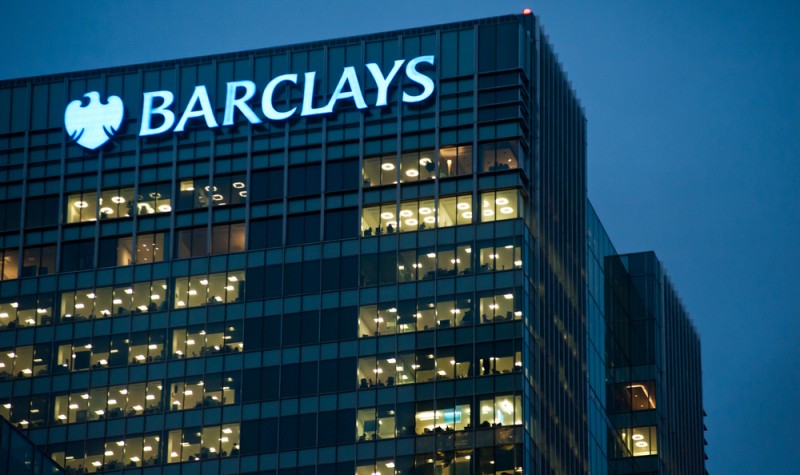Recovery in Play at Barclays?

Since this is the month for quoting Shakespeare, I point out that although a rose may smell just as sweet by any other name, a share smells twice as sweet to a buyer, if the share price increases significantly thereafter. Consequently the aroma of Barclays Bank at 175p, last seen, seems endearingly more fragrant than it did a short ten days ago, ahead of these results, when I judged it good value. These results make the shares look very good value, in my view.
One should consider the Barclays share price now against the technical position of the share price, which shows that it has, I think, just broken out from the recent downtrend. It seems to have performed what looks like a double bottom and now appears to be on the verge of turning into a rosy fragrance that will ascend the very Heavens of invention! (I here end my wholly inappropriate sally into the style of Will Shakespeare.)
Share price history
Basically, over five years the shares have traded pretty much between 150p and 300p. The share price is now at the bottom of that range and just bounced off it, which offers the prospect of a longer term recovery which could on that basis of previous performance see an almost doubling of the share price. I might add that the share price has fallen almost 34% in the last twelve months, even after this week’s bounce.
The results
The quarter’s results saw top line income up 11% but made a little less attractive by a 15% rise in bad and doubtful debts (the old language of banking, which sounds more Globe Theatre than the anaemic “impairment”). I add that this charge represented more than half the reported value of the pre tax figure of £793 million (down a quarter). Interestingly, what the bank blithely calls litigation and ‘conduct’ costs hardly put in an appearance this time as a significant accounting item of interest. In this more virtuous Q1, they were booked at £76 million in contrast to the £1,039 million of the decidedly less virtuous Q1 of the previous year. One thinks one sees the hand of the new Chief Executive at work in raising the bad and doubtful debt charge and the hand of his predecessor, the martyred “St. Antony” Jenkins in the improved bad conduct charge. If the impairment charge proves over cautious it may be called back into profit at some future date.
The market’s reaction to these results may be influenced by the thought that if the new orderly officer has an understandable self preserving interest to chuck in every kitchen sink, then the bank must be truly doing better than expected. This is no time for the new man to be gilding the lily! By the time we get down to basic earnings per share they are reported as down by only 7% from 2.9p to 2.7p. Crudely annualising those as an unscientific indicator of progress, they suggest a price to earnings ratio of 16 times.
Earnings per share for this year to December 31st 2016 were previously estimated in the market consensus of estimates to remain close to last year’s 16.6p (but to jump by more than a third next year). So my crude annualising of the first quarter’s earnings result seems to support that expectation.
Balance sheet ratios
Down in the engine room, the Tier 1 equity ratio was reading ‘steady as she goes’ at 11.3%, down from 11.4%. That means £40.9 billion of capital with which to absorb any future losses, up slightly from £40.7 billion. The other gauge of balance sheet leverage (ignoring the somewhat more subjective risk weighted asset ratio) was down from 4.5% to 4.3%. However, that is in excess of the Basel minimum of 3.0% figure and ahead of the expected, estimated new minimum of 3.8%. It is worth noting, that the total balance sheet leverage school of thought is in the ascendancy at the moment.
Other gauges showed liquidity lowered from £145 million to £132 million and the loan deposit ratio down from 86% to 84%. These readings must be seen in the light of the decision to sell the African business as a means of boosting these readings in one neat swoop rather than continuing to tinker away at the core operating system.
Outlook
The bank is being redefined in terms of its longer term core businesses. Of those the management speaks confidently but understandably adds a note of caution about the 23rd June referendum. The Barclaycard business seems to have made a big contribution this time around, with the company citing growth of the card’s use in the US and Germany.
The market consensus envisages top line income this year declining by around £3.5 billion, no doubt largely reflecting disinvestments. That 14% decline translated to a drop of only 5% in earnings per share which are estimated at 15.82p – pretty close to the 16.6p last year indicating better margins from the core business. The annual dividend for 2016 is expected to be 3.4p versus the 6.5p paid last year. Consequently, the shares are valued at an estimated price to earnings ratio for this year of 11 times and on a dividend yield of 2%. The market estimates a big 42% jump in earnings next year to 22.4p giving a price to earnings ratio of 7.8 times and covering the dividend yield of 2.1% more than six times.
This is a pretty cheap valuation of earnings growth and the share, in my opinion, remains one to buy and hold for recovery. Moreover, the share price still stands at a 38% discount to net tangible assets of a reported 286p. Clearly improving returns on those assets are not discounted in the share price.
Comments (0)